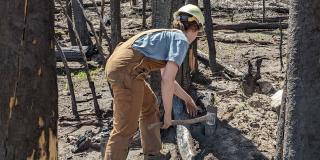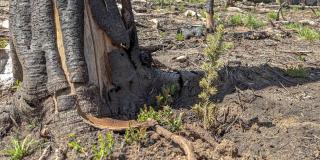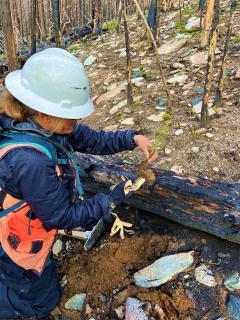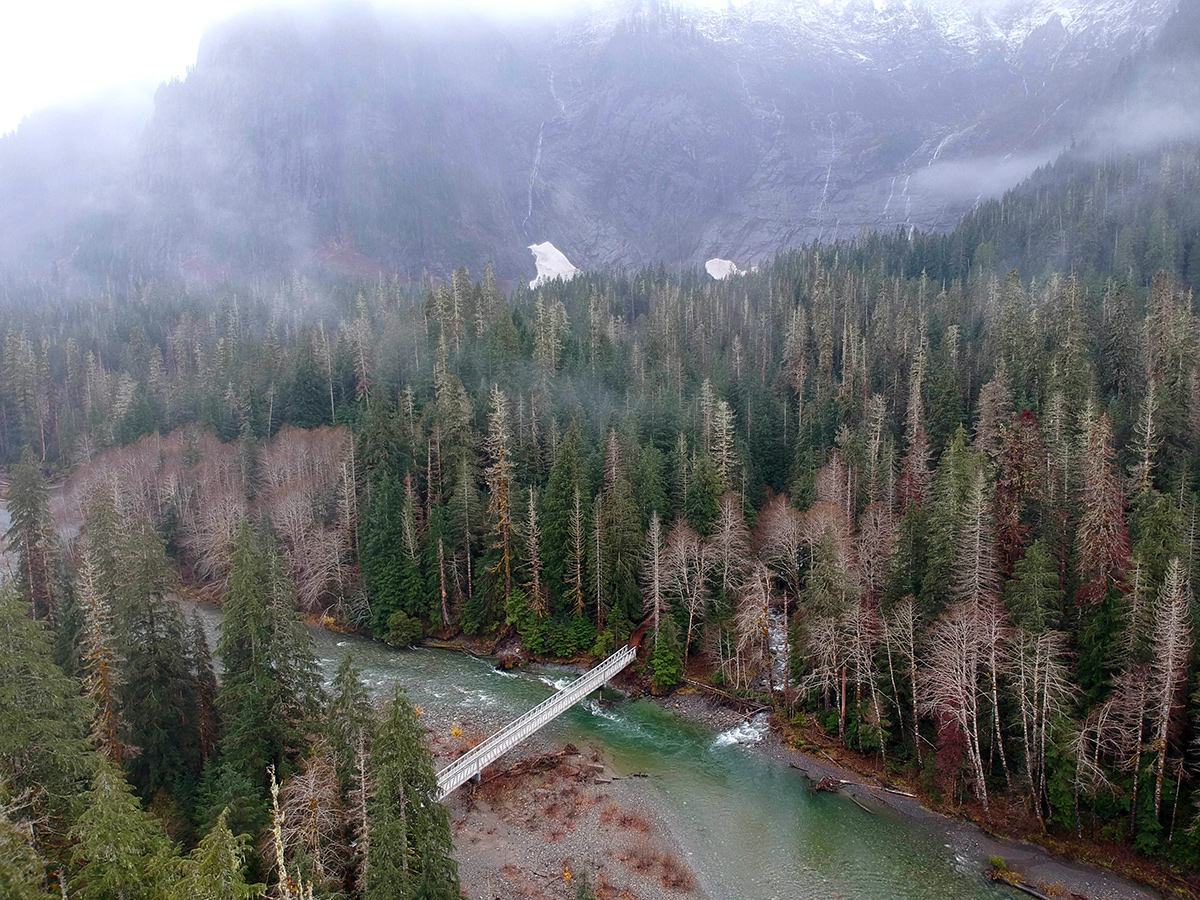
After the intense wildfires of 2020, Forest Service managers and scientists teamed up with conservation groups, water utilities, and universities. Their mission: To fix the damage to watersheds in the aftermath of massive high-elevation blazes.
Some may wonder why these wildfires are of particular concern. High-elevation forests are critical for our water supply, wildlife habitat, timber production, and recreation. In Colorado, these high forests occur between approximately 9,500-11,500 feet in elevation. Unfortunately, these areas are dealing not only with fires, but also bark beetles and severe drought that can further weakening of trees. Or kill trees.
The function of high-elevation watersheds and clean water they supply to downstream users depends on adequate forest cover from trees and understory plants. Fires that remove this greenery cause erosion and generate excess nutrients that seep into streams and reservoirs. In Colorado and across the western U.S., the return of stream water to pre-fire conditions relates to the pace of vegetation regrowth, especially that of vegetation growing adjacent to streams.
Under ideal conditions, forest recovery takes a few decades. But at higher elevations, recovery can take centuries. Drought and previous bark beetle outbreaks only delay the recovery process even more. Since these high-elevation places are expected to warm and dry further, questions loom about whether we should plant trees after fire, and if so, which species, and where should we plant them.
It is important to maintain forest cover to protect water quality within the watershed here. The Forest Service is working to replant following the severe wildfire events. But given the extent of recent fires, it’s challenging to decide where to start.

Researchers like Forest Service biogeochemist Chuck Rhoades and his partners aim to figure out the best ways to promote forest and watershed recovery after wildfire. Since the 2020 fires, they've kept a close eye on how forests are responding.
With support from the Infrastructure Investment and Jobs Act and other funding sources, Rhoades and a group of restoration partners including the Coalition for the Poudre River Watershed, the cities of Fort Collins and Greeley, and Denver Water, a public utility providing water to 1.5 million people in Denver and many surrounding suburbs, have started planting spruce, pine, and other vegetation along streams in areas hit by the wildfires in Northern Colorado.
Restoring burned watersheds doesn't just mean planting trees. Sometimes, it involves constructing physical structures in streams and floodplains to slow flood flows and trap excess sediment and nutrients.
If all goes well, these projects will have positive effects on downstream water quality, aquatic habitat, and native plant biodiversity. There's still a lot to learn, and ongoing research will help evaluate the effectiveness of current restoration treatments guide development of new approaches to approaching watershed restoration following wildfires. To learn more about how high-severity fires affect watersheds, read Forest, Fire and Faucets News Bulletin.







